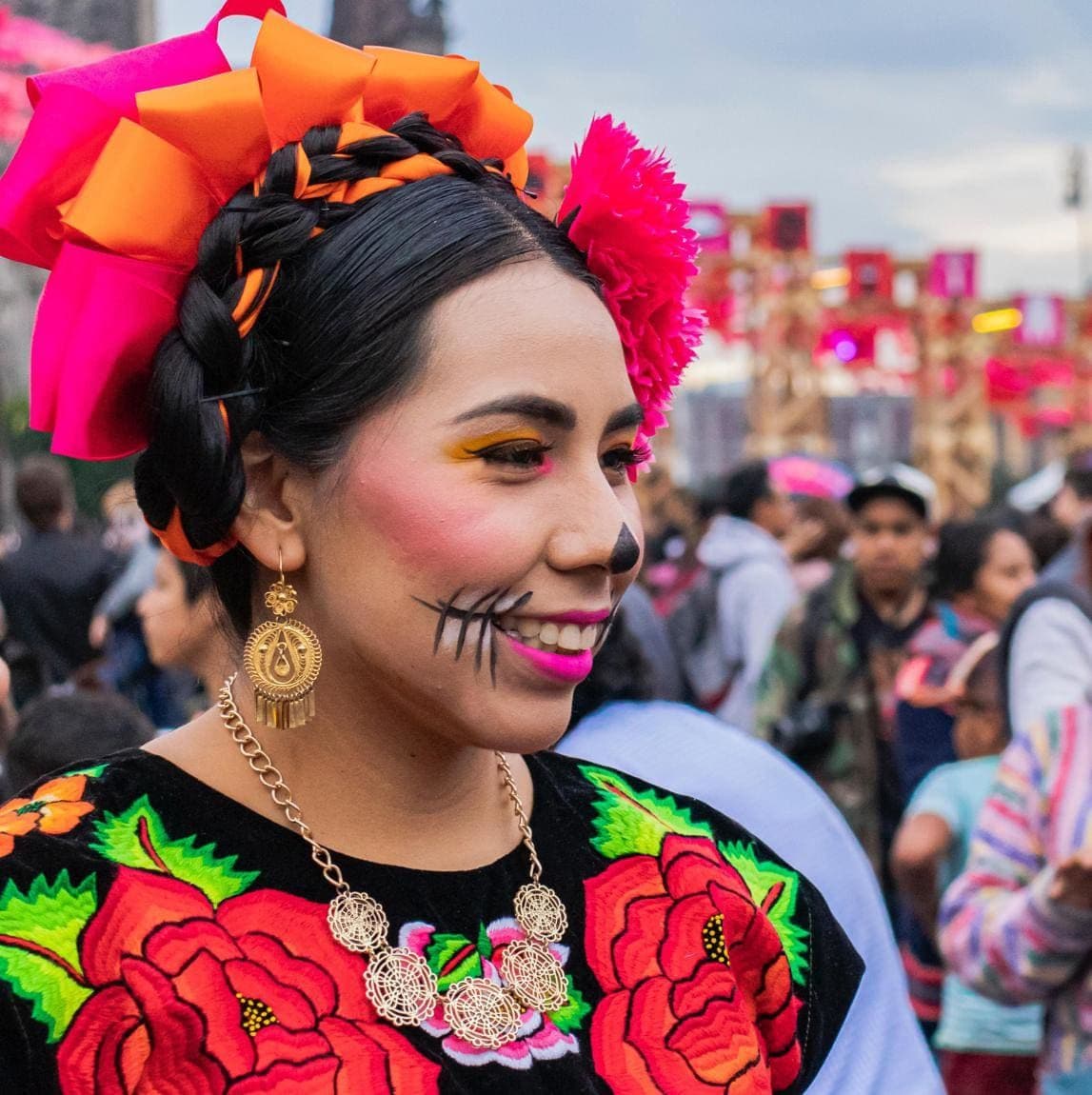Día de Muertos is a Catholic holiday celebrated in Mexico and elsewhere who observe All Saints’ Day and All Souls’ Day. The two-day festivities (November 1 and November 2) involves prayers, ofrendas, parades, cookouts, and more. It is unknown the exact period this tradition started; however, some Mexican academics believe it has indigenous pre-hispanic roots, while others think that it might be a 20th-century tradition adapted from Spain to encourage Mexican nationalism.
In other Spanish-speaking countries, the festivity is part of the Hispanic Catholic festival and is commonly called Día de Los Muertos, or Día de Los Fieles Difuntos. The observance in Mexico has become a national symbol; therefore, in 2008, a committee requested to UNESCO the adoption of an agenda to declare the tradition an Intangible Cultural Heritage of Humanity.
To learn more about this multi-day holiday and how to celebrate it, find below five things you might want to know.
1. The annual holiday is nothing like a funeral
Día de Muertos is not a day to be sad or mourn the departed, but a date to celebrate, and remember their lives with activities, food, and drinks the deceased enjoyed in life. According to the tradition, during these days the dead return awake from their eternal sleep to enjoy the celebration and visit their loved ones.
2. Families build ofrendas (altars) to honor the deceased
Every year, families build breathtaking and colorful Día de Muertos altars containing all the favorite foods and beverages of the departed. The altar includes photos and memorabilia that belonged to the departed. It is also decorated with orange Mexican marigolds (Tagetes erecta) called cempasúchil or Flor de Muerto (‘Flower of Dead’), scores of candles, tequila, mezcal, or jars of atole, trinkets, candied pumpkin, pan de muerto (‘bread of the dead’), and sugar skulls.
3. Food is both eaten by living people and the spirits
It is believed the dead eat the “spiritual essence” of the ofrendas’ food; therefore, during the Día de Muertos festivities, living people prepare food for their ancestors and for their enjoyment. One of the most common dishes prepared during the festival is Tamales, a traditional dish, made of masa or dough filled with finely chopped meat and vegetables, steamed in a corn husk or banana leaf. Pan de muerto, a type of sweet roll shaped like a bun, topped with sugar and often decorated with bone-shaped pieces, and calaveras, or sugar skulls, are also served. To complement the foods, families make traditional Día de Muertos drinks like pulque, atole, champurrado, and agua de Jamaica (water of hibiscus).
4. The skull is a common symbol of the holiday
Calaveras or Día de Muertos skulls are associated with the Día de Muertos and considered part of modern observances. The image of the calacas or skeletons can be found in foods or different items.
5. Celebrations and customs vary from town to town
The traditions and activities of these days are not universal. In some parts of Mexico, people celebrate dancing with colorful costumes, skull-shaped masks, and devil masks; in the cities, children in Día de Muertos costumes knock on people’s doors for a calaverita, a recent custom similar to trick-or-treating on Halloween.
,type=downsize)
